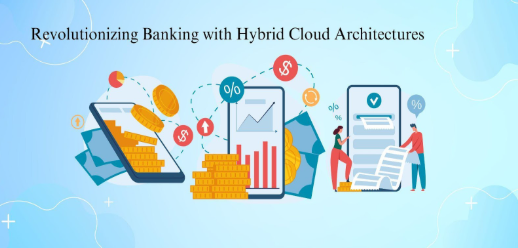The integration of hybrid cloud architectures is transforming the banking sector, enabling the deployment of advanced AI solutions that are scalable, cost-effective, and secure. Vedaswaroop Meduri, whose research focuses on this innovation, highlights how hybrid cloud models are reshaping financial services by addressing critical operational and security challenges.
A New Era in Banking Infrastructure
Hybrid cloud architectures represent a blend of public and private cloud systems, offering banks unparalleled flexibility. By dynamically allocating resources, institutions can process fluctuating workloads efficiently. For example, during peak demand periods, banks can leverage public cloud resources to scale operations seamlessly while keeping sensitive customer data secured on private servers. This dual capability not only ensures cost optimization but also facilitates compliance with stringent regulatory requirements.
Empowering Artificial Intelligence Deployment
The demands of AI in banking require robust infrastructure. Hybrid clouds enable real-time processing of vast structured and unstructured data, supporting advanced AI models for fraud detection, customer service, and credit risk analysis. These architectures minimize latency during high-volume data processing, ensuring competitive performance. AI chatbots handle 85% of routine inquiries with 92% accuracy, while fraud detection systems achieve 99.5% accuracy analyzing thousands of transactions per second. Hybrid clouds amplify AI’s effectiveness through scalability and computational power.
Optimized Data Management
Hybrid cloud systems streamline banking operations by managing vast datasets with intelligent tools, reducing storage costs, and enhancing data accessibility. Banks report 65% faster data retrieval, improving decision-making. Advanced governance ensures compliance, with 99.5% accuracy in sensitive data identification. Caching reduces bandwidth use by 35%, boosting efficiency and security.
Strengthening Security and Compliance
Security is paramount in banking, and hybrid clouds deliver robust protection. Advanced encryption secures data during transfer and storage, while automated compliance tools maintain 99.99% regulatory adherence. Hybrid architectures ensure data sovereignty across regions, enhancing operational integrity. AI-driven monitoring detects threats in seconds, reducing response times and minimizing breaches. With capabilities to process 500,000 security events per second, hybrid clouds improve accuracy by cutting false positives by 60%, fostering trust and resilience in digital banking platforms.
The Financial Advantages
From an economic perspective, hybrid cloud adoption yields substantial savings. Banks transitioning to these architectures have reported a 50% reduction in IT infrastructure costs. By shifting from capital-intensive models to consumption-based pricing, institutions optimize resource utilization, cutting operational expenses by up to 40%. Additionally, hybrid clouds reduce energy consumption and cooling costs in data centers by 45%, underscoring their environmental and economic benefits.
Cost efficiencies also extend to application development and deployment. Research indicates that hybrid cloud architectures reduce these costs by 40%, enabling faster innovation cycles. Banks using hybrid systems achieve a 30% faster time-to-market for new services, enhancing their ability to compete in a dynamic financial landscape.
Leveraging Emerging Technologies
The integration of edge computing within hybrid cloud ecosystems is another transformative trend. Edge nodes enable real-time data processing closer to the source, reducing latency and enhancing customer experiences. For instance, branches in remote locations can use edge computing to maintain high service standards despite limited network connectivity. This innovation aligns with the broader movement toward decentralized and resilient banking systems.
Edge computing also enhances data privacy by processing sensitive information locally, reducing the risks associated with data transfers to centralized systems. Banks employing edge computing have achieved a 40% reduction in data transfer volumes while maintaining compliance with international regulations, reinforcing trust and reliability.
A Vision for the Future
The convergence of AI, edge computing, and hybrid cloud technologies paves the way for intelligent automation in banking. Personalized services driven by AI analytics have already improved customer satisfaction scores by 45%, while reducing operational costs by 70%. These advancements signify a future where banking is more responsive, secure, and customer-centric.
In conclusion, as Vedaswaroop Meduri’s work demonstrates, hybrid cloud architectures are at the forefront of banking innovation. By combining scalability, cost efficiency, and enhanced security, this model equips financial institutions to navigate the challenges of digital transformation effectively. With continued investment in these technologies, the banking sector is poised to achieve unprecedented growth and operational excellence.



































